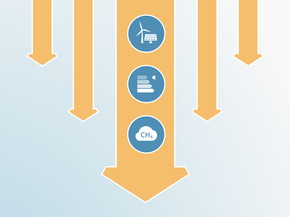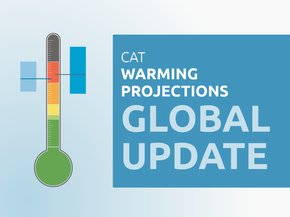Assumptions
Historical emissions
Historical emissions are taken from the Federal Environment Agency (UBA) published in March 2025 (UBA, 2025c). UBA provides the data using Global Warming Potentials from AR5.
Note there is an unexplained jump from -18 to -80 MtCO2e in sinks from forests in the inventory data from 1990 to 1991.
NDC and other targets
The Federal Climate Change Act (KSG) sets interim targets of -65% by 2030 and -88% by 2040 (compared to 1990 levels). The target is calculated using sector-specific emission budgets monitored annually by the Federal Environmental Agency (UBA) and the Expert Council on Climate Issues (EKR). What we rate in the case of Germany is not the EU NDC but this “national target” instead.
Current policy projections
The current policy projections are adapted from the projections report (“Projektionsbericht 2025”) published by the Federal Environment Agency (UBA) in March 2025, which includes all measures that were agreed by the end of October 2024 (UBA, 2025a). The base year value of 2019 from the projections varies slightly from the latest historical inventory data from 2023, and we harmonise the projections to the inventory by assuming that the relative difference in 2019 for each sector is constant in the future for the projections.
UBA provides in their most recent publication the scenario “With implemented measures” (MMS). This scenario is used to define the lower bound of emissions projections. For certain sectors, we apply corrections to reflect recent policy developments and implementation trends. These adjusted assumptions are used to define the upper bound of the emissions projections
- Power: The UBA’s 2025 projection assumes that a 78% renewable energy (RE) share will be achieved by 2030, closely aligning with the government’s 80% target. While solar capacity additions are largely on track, wind energy is significantly behind: by mid-2025, only around 27% of the planned wind capacity additions for 2024 and 2025 had been installed. We assume that wind installations in 2025 will continue at the same pace as in the first half of the year.
From 2026 onward, we expect deployment to accelerate. This is based on record-high permitting activity in 2024 for new wind turbines and the planned expansion of offshore wind under the “Flächenentwicklungsplan 2023”. Specifically, we assume that each year from 2026 to 2035, half of the additional capacity needed to close the gap toward the government’s annual wind targets will be installed.
Given the delays so far, we consider the UBA’s assumptions for wind deployment to be overly optimistic. As a result, we use this more conservative capacity trajectory to define the upper bound of emissions projections for the energy sector. Under this assumption, wind capacity reaches 104 GW by 2030 and 131 GW by 2035, compared to the government’s official targets of 145 GW and 197 GW, respectively. We estimate the resulting electricity shortfall relative to the UBA scenario and assume it is covered by natural gas. This leads to approximately 20 MtCO2 of additional emissions in 2030 and 40 MtCO2 in 2035.
- Transport: The UBA projection report assumes that passenger EV sales will continue to increase every year until 2035: in 2025, registrations of new passenger EVs are projected to increase by over 140% relative to 2024 and amount to over 900,000 new EVs (KBA, 2023; UBA, 2024a). Although sales data for the first months of 2025 looks promising, it seems unlikely that sales will increase to the UBA’s projected level by the end of 2025; especially, given the previous government eliminated the purchase incentives for passenger EVs and the new government has yet to introduce new incentives or policies to spur the uptake of new EVs (KBA, 2024b, 2024c, 2024d, 2024a).
Therefore, we delay the share of passenger car emissions reduction by one year to define the upper bound of the emissions projections in the transport sector. Passenger cars accounted for approximately 60% (59.71%) of total road transport emissions between 2018 and 2022 (Eurostat, 2024) Therefore, 60% of sectoral emissions reductions are delayed by one year. This leads to approximately 3 MtCO2 of additional emissions in 2030 and 6 MtCO2 in 2035 relative to UBA’s MMS scenario.
- Buildings, Industry, Agriculture and Waste: No adjustments are made in these sectors; we use the UBA’s MMS scenario for both the lower and upper bounds of the emissions projections.
Net-zero target and other long-term targets
Germany aims to become climate neutral by 2045, meaning it will reduce greenhouse gas emissions to net zero by balancing remaining emissions with removals. According to Germany’s Climate Change Act, the 2045 climate neutrality target includes a sink of 40 MtCO2e to compensate for some remaining emissions sources. We thus estimate the total GHG emissions excluding LULUCF in 2045 at 40 MtCO2e.
Global Warming Potentials values
The CAT uses Global Warming Potential (GWP) values from the IPCC's Fifth Assessment Report (AR5) for all its figures and time series.
Further analysis
Latest publications
Stay informed
Subscribe to our newsletter




